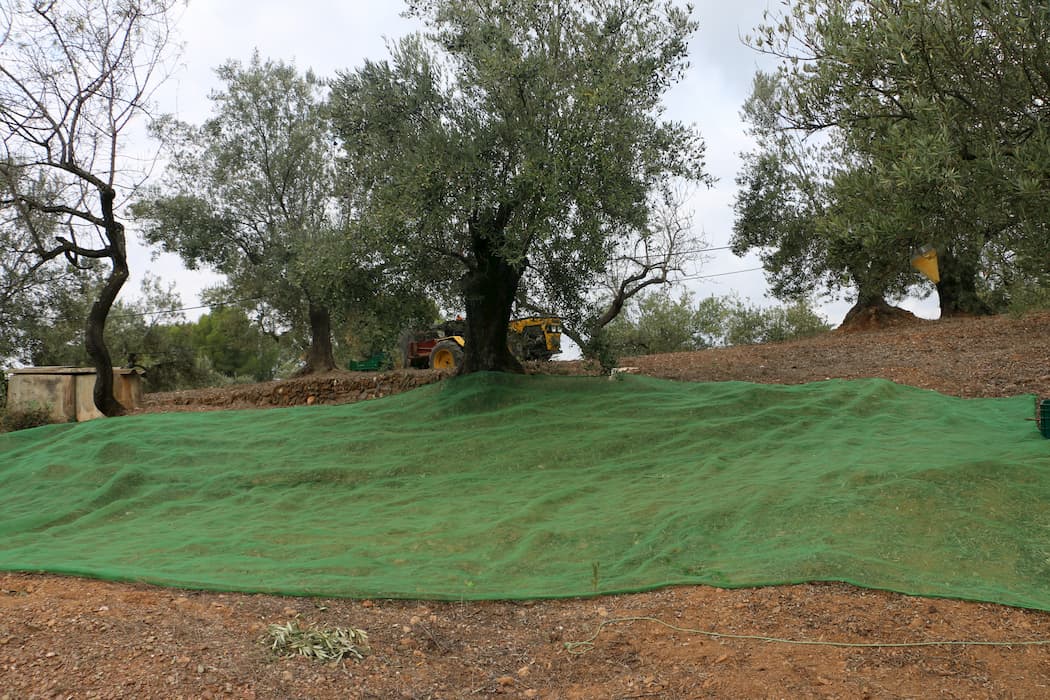Olives harvest in Olesa de Montserrat
Shaking of an olive tree with a gasoline engine vibrator.
In the months of October, November and December, is when most of the olives are harvested in Olesa de Montserrat, largely in farms located in the Puigventos massif. It is an early harvest, where all the olives are harvested directly from the tree, using shawls and shawls. In this way, a high quality is achieved in the olive (Palomar autochthonous variety), since it is at an optimal ripening point and does not come into contact with the ground. Despite being still partially green, the olive already contains 95% of the oil that it would contain if it were allowed to fully ripen. The palomar variety is the most used in Olesa de Montserrat (also present in the municipalities of Esparreguera, Collbato, Vacarisses and El Bruc.), Obtaining a high quality, aromatic oil, with little acidity and with good stability. A characteristic of the Palomar olive tree is that the fruits fall easily from the tree (due to the wind, rain, etc.) even though most of them are still green, that is why it is also important to make an early harvest and quickly take it to one of the nearby oil mills, such as the " Molí d'Oli d'Olesa "of the Fundació Agricola Olesana located in Olesa de Montserrat. Due to incomplete maturation, the water content is still high, giving worse yields (understood as a ratio in kg of oil obtained per kg of ground olive) than with the more mature fruit, this raises the cost of the grinding process, but is more than compensated with the increase in the quality of the oil. Due to incomplete maturation, the water content is still high, giving worse yields (understood as a ratio in kg of oil obtained per kg of ground olive) than with the more mature fruit, this raises the cost of the grinding process, but is more than compensated with the increase in the quality of the oil. It is also important to bear in mind that an early harvest reduces wear and tear on the tree, leaving it more resources for the following season.
Vibrating hook, working in an olive tree.
The most widespread harvesting system is with shawls and vibrating hook (it is hooked to the branches to make the olives fall with the vibration). Another system on the rise is the use of motorized "combs", which "comb" the branches, causing the fruit to fall. Traditional manual stranding is also still a widely used system. In all these systems, in sloping areas, after correctly placing the shawls so that the olives do not jump out of them, we will start by varaying ourselves in the lower part, and then going up, thus minimizing the possibilities of stepping on the fruit when move around.

Shawl placed in an olive tree.
Tags: agricultura, farming, oliva, olesa de montserrat, puigventos, montserrat, montserrati, oli, aceite, oilmontserratnatural.com @Copyright 2020
Privacy Config